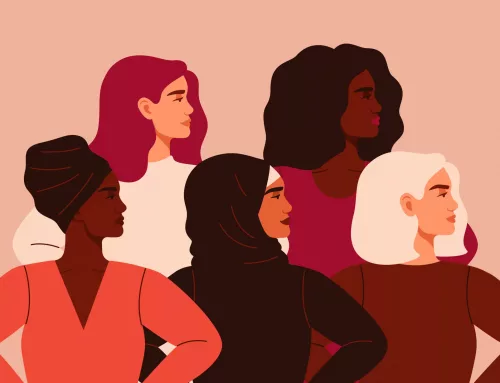35 Black Job Statistics – Learn Where We Are so We Can Grow
How much do you know about Black job statistics? There’s an awful lot of data, opinions, and written material when it comes to how the workforce in the U.S. is doing. General trends point to the labor market being at times more attractive, then less available, and sometimes offering an uneven quality of jobs. In a lot of ways, it can feel like a rollercoaster with things getting better and worse both for people already employed and those seeking that perfect job. But as a demographic, Black workers have to take more into account.
Digging into Black job statistics tells a story about the community and its experience in the labor market, which is at the same time reflective of larger trends and also is particular to the Black experience. Of course, this brings up a set of challenges that other demographics don’t need to confront. But there’s also a tremendous amount of inspiring tales of breakthroughs, turnarounds, and silver linings in the clouds.
The thing is, we have to be sure that we are looking at real data and not just relying on anecdotes that might ring true but don’t accurately capture what’s really going on out there. That’s why it’s important to take the time to learn about Black job statistics. Understanding cultural shifts in the job market gives one a sort of barometer for how things have progressed for the Black community and how much more work there is to do. Knowledge is power, they say, so it’s time for a little strength training for the mind! Here are 35 Black job statistics you should know.
Basics in Black Labor Markets
- As of December 2022, the Black unemployment picture improved greatly. While still higher than among white workers, gains were made. For the African American community, it hovered at just over 5%. This is far lower than the averages seen over the previous 20 years.
- Black women are more likely to be employed than white women. In one study, 77% of single Black mothers were working, about 6 points ahead of the next nearest group.
- Black unemployment ticks higher among the population lacking a high school diploma. As much as 18% for those who never achieved that level of education.
- Black job statistics are revealing an aging workforce. There are more Black workers older than 55 than there are younger than 24.
- Throughout the U.S., about 24% of all Black households have no one working in the family. This is a little higher than the national average of 21.5%.
- One study showed that as many as one in three Black workers reported facing bias in the workplace that led them to quit. Those numbers are lower for other demographic groups.
- Black job statistics show that labor participation in the community is at almost 61%. By comparison, Hispanics are at about 65.5%, and Whites are at 61.5%.
- In the category of highest-paying jobs, about 34% of Black workers enjoyed such positions. Asians came in at 58%, and Whites at 43%.
- As far as earnings go, Black workers average about $801 a week, while Whites earn about $1018. This also means that more Black workers turn to freelance work to boost their income.
- Discrimination is still a major factor in labor disparities for Black workers. One study found Fortune 500 companies were less likely to call back applicants with Black sounding names.
- Overall, 13% of the workforce is made up of members of the Black community. This tracks closely with the Black population, which is 13.6% of the U.S.
- Racial wage gaps have been stubbornly persistent in the U.S. Between 1979 and 2019. Median wages grew by 14%, while the number for Black workers was 5.2%.
Executive and Entrepreneurial Black Job Statistics
- Black-owned businesses have been on the rise. In both employer and non-employer Black businesses, numbers have jumped 5%-8% in recent years, thanks in part to access to grants.
- Out of Fortune 500 companies, just six have Black CEOs. That includes big names like Lowe’s, the home improvement company.
- A study has shown that companies with diverse board members outperformed companies that saw less diversity at that level. Black career networks are helping change the game.
- Diversity has also been proven to spur innovation in business. This makes more room for Black workers seeking critical roles in dynamic teams.
- Companies with more diversity in executive positions have proven to be more profitable. Again, this makes a strong argument for greater opportunities for Black executives.
- Regardless of the more optimistic trends, Black executive positions remain low. At the latest count, only 2% of people in those roles are Black.
- It is currently estimated that there are around 2 million Black-Owned businesses in the United States. This shows an increase in recent years.
- Location may matter as the state of New York leads the way in the number of Black-owned businesses. Washington, D.C., holds the record for the city with the most Black-Owned businesses.
- The largest Black-owned business in the United States is World Wide Technology. They made $2 billion in revenue in 2016.
- Healthcare is the sector that sees the highest rate of Black-owned businesses. Overall, those entrepreneurs hold 32% of that demographic.
- When it comes to Black women, entrepreneurship is behind but catching up. Latest figures estimate Black woman-owned businesses at 35%.
- Black-owned businesses employ about 1,000,000 people in the United States. Black billionaires are among the largest employers.
The Future of Black Job Statistics
- Estimates show that by 2044, traditionally marginalized minority demographics will achieve majority status in the United States. This follows as we see more opportunities for Black workers opening up.
- Millennials are 16 percent more diverse than the Boomer generation. This bodes well, as it points to a potential drop in workplace bias.
- The number of Black financial influencers is on the rise. This is an indication of a stronger economic position for Black workers as well as more job opportunities.
- Growing numbers of job seekers openly express a desire to work in diverse workplaces. A survey in 2020 showed that up to 76% of employees felt that way.
- Half of employees express that they want to see more diversity in their workplace and expect leadership to make efforts in that direction.
- A study shows Black workers find themselves in higher numbers when it comes to jobs with limited development potential and underrepresented in roles that could lead to growth.
- Another report shows that in the American rural South, automation might be a threat to the future of Black job growth.
- While the Black community has seen growth in the STEM sector, future trends are not moving fast enough. This speaks to challenges in the education pipeline.
- As many as 75% of companies are implementing robust Diversity and Inclusion programs. Such initiatives could widen future prospects in the Black Community.
- And in the C-Suite, 40% of companies are making diversity and equity a priority. Such trends can point to a top-down positive cultural trend that will benefit Black workers.
- By 2065, the United States will likely no longer have “minorities” in the traditional sense, meaning that group empowerment will be higher. This, too, could bode well for the future of Black work.








